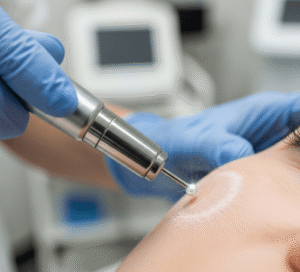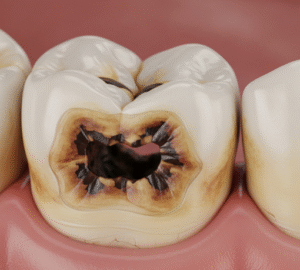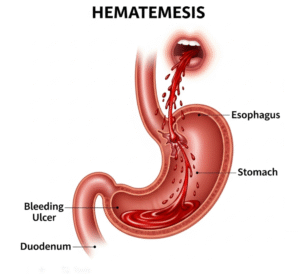Overview
Cervical screening is a preventive medical test used to detect abnormal cells in the cervix, which may indicate precancerous changes or cervical cancer. Early detection through screening allows timely intervention, reducing morbidity and mortality from cervical cancer.
Importance of cervical screening:
- Detects precancerous or abnormal cervical cells early.
- Reduces cervical cancer incidence and mortality.
- Guides timely treatment and follow-up.
- Supports long-term reproductive and gynecological health.
In South Korea, cervical screening is widely available through public health programs, gynecology clinics, and hospitals, using Pap smears and HPV testing according to national guidelines.
Why It’s Done
Cervical screening is performed to identify early cellular changes that could progress to cervical cancer.
Common indications include:
- ➤ Routine screening: Women aged 21–65 years, with intervals depending on age and risk factors.
- ➤ High-risk patients: HPV infection, immunocompromised state, or previous abnormal Pap smear results.
- ➤ Follow-up after treatment: Monitoring after cervical dysplasia treatment.
- ➤ Symptoms evaluation: Unexplained vaginal bleeding, abnormal discharge, or pelvic pain.
Benefits for patients:
- ✔️ Detects early cervical abnormalities before symptoms appear.
- ✔️ Allows preventive treatment for precancerous lesions.
- ✔️ Reduces risk of invasive cervical cancer.
- ✔️ Supports long-term reproductive health.
Alternatives
While Pap smear and HPV testing are standard methods, other options may complement or be used in special situations:
- ➤ Visual inspection with acetic acid (VIA): Used in resource-limited settings.
- ➤ Colposcopy: Diagnostic procedure when abnormal cells are detected.
- ➤ HPV DNA testing: Detects high-risk HPV strains causing cervical cancer.
- ➤ Regular gynecological exams: Clinical evaluation without cytology.
Key point: Pap smear and HPV testing remain the most effective methods for routine cervical cancer screening, while others are diagnostic or adjunct tools.
Preparation
Preparation for cervical screening is simple but essential for accurate results.
Steps include:
- ✅ Schedule appropriately: Avoid during menstruation for clear results.
- ✅ Avoid vaginal products: No douching, vaginal creams, or medications 48 hours before the test.
- ✅ Sexual activity: Refrain from intercourse 24–48 hours prior.
- ✅ Medical history: Inform the healthcare provider about prior abnormal results, HPV vaccination, or gynecological procedures.
- ✅ Comfortable clothing: Facilitates examination.
Important: Proper preparation ensures reliable sampling and accurate results.
How It’s Done
Cervical screening is a quick, non-invasive procedure performed in a gynecology clinic.
Step-by-step process:
- Patient positioning: Lying on an examination table with feet in stirrups.
- Speculum insertion: Gently opens the vaginal walls to visualize the cervix.
- Sample collection:
- Pap smear: Cells scraped from the cervix with a brush or spatula.
- HPV test: Cells collected for DNA testing of high-risk HPV types.
- Sample preservation: Placed in a vial or slide for laboratory analysis.
- Completion: Speculum removed; patient resumes normal activity immediately.
Duration: Typically 5–10 minutes.
Discomfort: Mild cramping or pressure may be felt; procedure is generally well-tolerated.
Recovery & Follow-up
Cervical screening does not require recovery.
Post-procedure:
- Minor spotting may occur in some women.
- Resume normal daily activities immediately.
- Results are usually available within a few days to two weeks.
Follow-up:
- Normal results: Routine screening intervals maintained.
- Abnormal results: Colposcopy, biopsy, or treatment may be recommended.
- High-risk patients: More frequent surveillance or preventive measures advised.
Important: Maintaining a record of screening results helps track cervical health over time.
Possible Complications
Cervical screening is extremely safe, with minimal risks:
- ⚠️ Mild discomfort or cramping – temporary during the procedure.
- ⚠️ Spotting or light bleeding – resolves within a day.
- ⚠️ Infection – very rare; proper sterile technique minimizes risk.
- ⚠️ False positives or negatives – may require repeat testing or additional evaluation.
In South Korea, trained professionals and standardized laboratory procedures ensure high accuracy and minimal complications.
Treatment Options / Clinical Relevance in Korea
Cervical screening is part of South Korea’s national cancer prevention program, aimed at early detection and treatment of cervical cancer.
Key features:
- 🏥 Public health initiatives offering Pap smears and HPV testing.
- 🏥 High-quality laboratories for cytology and HPV DNA testing.
- 🏥 Integrated follow-up care: Colposcopy and treatment for abnormal findings.
- 🏥 Screening for high-risk groups: Women with previous abnormal results or immunocompromised status.
- 🏥 Educational programs promoting awareness and preventive measures.
Hospitals and clinics providing cervical screening in Korea:
- Seoul National University Hospital – Comprehensive gynecology and preventive screening
- Asan Medical Center – Advanced cervical screening and colposcopy
- Samsung Medical Center – HPV testing and follow-up programs
- Local public health centers – Accessible nationwide cervical cancer screening
Highlights in Korea:
- ✔️ Screening reduces cervical cancer incidence and mortality.
- ✔️ National guidelines ensure timely and standardized screening.
- ✔️ Follow-up programs allow early treatment of precancerous lesions.
- ✔️ Awareness campaigns improve participation and early detection rates.
Highlights
- ➤ Cervical screening detects precancerous changes and reduces cervical cancer risk.
- ➤ Recommended for women aged 21–65 years according to risk and national guidelines.
- ➤ Preparation involves avoiding menstrual periods, vaginal products, and sexual activity prior to the test.
- ➤ Procedure is quick, non-invasive, and well-tolerated.
- ➤ Recovery is immediate, with minor spotting possible.
- ➤ Minimal risks: temporary discomfort, light bleeding, or rare false results.
- ➤ South Korea provides comprehensive cervical screening, with Pap smear, HPV testing, follow-up colposcopy, and national cancer prevention programs.













